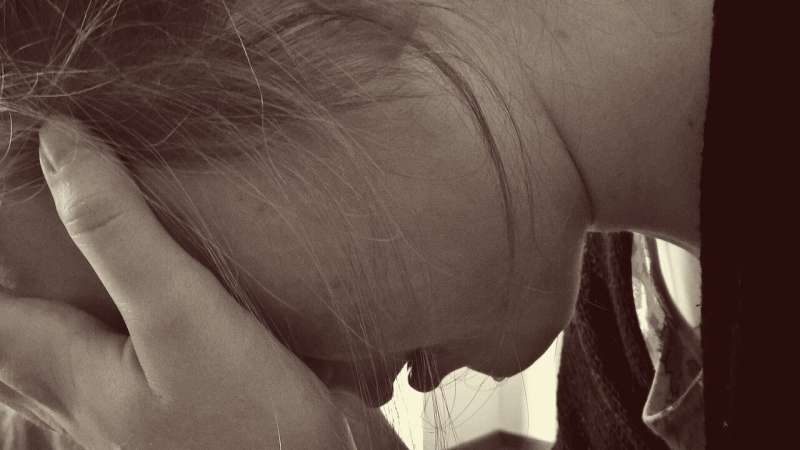Home » Health News »
Menstrual cycles affect day-to-day suicide risk, researchers find

Female patients with a history of suicidality experience an increased risk of suicidal ideation or suicidal planning in the days surrounding menstruation, according to a new study by researchers at the University of Illinois Chicago.
In the first longitudinal study of how suicidal thoughts and related symptoms fluctuate across the menstrual cycle, UIC researchers identified when some female patients are at the highest risk, offering new guidance for clinicians about when to focus interventions with suicidal patients.
“As clinicians, we feel responsible for keeping our patients safe from a suicide attempt, but we often don’t have much information about when we need to be most concerned about their safety,” said Tory Eisenlohr-Moul, associate professor of psychiatry at UIC and senior author of the paper in the American Journal of Psychiatry.
“This study establishes that the menstrual cycle can affect many people who have suicidal thoughts, which makes it one of the few predictable recurring risk factors that have been identified for detecting when a suicide attempt might occur.”
The American Journal of Psychiatry study, which is co-led by postdoctoral researcher Jaclyn Ross and MD/Ph.D. student Jordan Barone, followed 119 patients who completed a daily survey to track suicidal thoughts and other mental health symptoms over at least one menstrual cycle.
The design allowed the researchers to collect detailed data on changes in patients’ mental health over the course of their cycle. Previous research did not have this sort of tracking and only worked to estimate the timing of a person’s menstrual cycle status with a single time point after a suicide attempt.
Those past studies observed a pattern where suicide attempts increased in the days just before or after the onset of menses—the “perimenstrual” phase. The new UIC study replicated this pattern, finding that suicidal ideation was more severe and suicidal planning was more likely to occur during this point in the cycle compared to other phases.
The daily data also allowed the researchers to delve deeper into differences between individuals in how the cycle affects symptoms and suicidality.
“Previously, there haven’t been good predictors for why or when Person A is likely to make a suicide attempt versus when Person B is going to make an attempt,” Barone said. “Not everyone is hormone sensitive to the cycle in the same way, and we were able to statistically show the value of including individual differences in our models.”
Most patients in the study reported significant elevation of psychiatric symptoms such as depression, anxiety, and hopelessness in the premenstrual and early menstrual phases, while others reported emotional changes at different times of their cycle. Individuals also varied in the specific psychiatric symptoms that appeared alongside suicidal thoughts.
“People differed in which emotional symptoms were most correlated with suicidality for them,” Eisenlohr-Moul said. “Just because the cycle makes somebody irritable or have mood swings or feel anxious, it doesn’t necessarily mean that that’s going to have the same effect on creating suicidality for each person.”
That observation fits with the broader research focus of Eisenlohr-Moul’s group, the CLEAR lab. The laboratory also studies premenstrual dysphoric disorder, a condition associated with an increased risk of suicidal thoughts and behaviors. Observational studies and clinical trials led by Eisenlohr-Moul have found that PMDD may result from some people’s heightened sensitivity to the reproductive hormones estrogen and progesterone—and stabilizing those hormones may lessen symptoms.
Similar dynamics of hormone sensitivity may be at play in the influence of the menstrual cycle upon suicidal thoughts in people without PMDD, the authors said. However, more research is needed to determine how these factors affect each other in individual patients and how that information could best be used clinically to prevent suicide attempts.
One idea is for patients to keep track of their mental health symptoms over the course of their cycle—as subjects did in the current study—to enable their clinicians to make personalized recommendations about their care.
“We’re excited to use the best methods out there to try to create individual prediction models for each person so that we’re not putting people into a box,” Eisenlohr-Moul said. “We want to really figure out: does the cycle matter for this person, and then exactly how does it matter and how we can best intervene based on that information.”
More information:
Jaclyn M. Ross et al, Predicting Acute Changes in Suicidal Ideation and Planning: A Longitudinal Study of Symptom Mediators and the Role of the Menstrual Cycle in Female Psychiatric Outpatients With Suicidality, American Journal of Psychiatry (2023). DOI: 10.1176/appi.ajp.20230303
Journal information:
American Journal of Psychiatry
Source: Read Full Article



